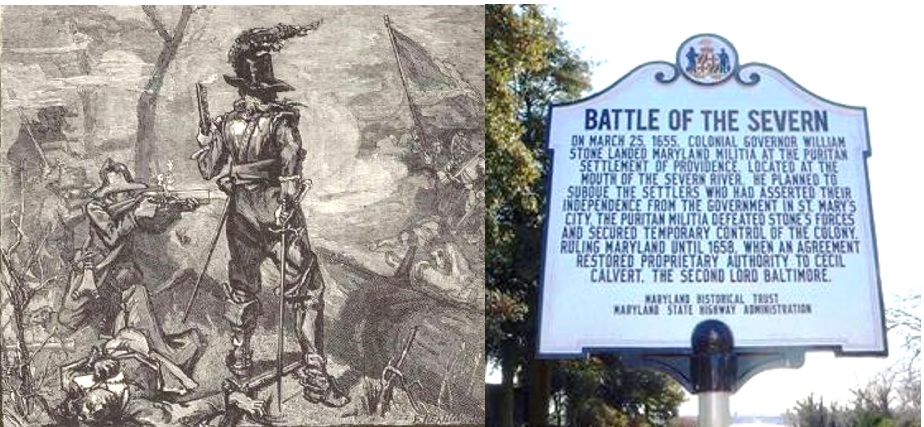The Battle of the Severn River
Alan’s TTIM Stories #70
A monarch’s execution, a country’s civil war, conflict of religions, claims on a continent, power struggles – historically, affected the current peaceful town of Annapolis and a peculiar event in the history of Maryland.
Ever since the rule of Henry VIII, England bounced between Catholicism and Protestantism. This instability directly affected the British Empire including the new American colonies. When the king broke from the Vatican and the Catholic Church, it opened a variety of ecumenical thought. Two factions at each end of the controversy felt unwanted in their native land.
A group of Protestants, called the Puritans, felt the Church of England too closely followed the separated Catholic church. Their intolerance for all other religious thought created enemies. North America offered a place for them to practice their dogma without interference – Massachusetts.
Farther south, Catholics from a Protestant England settled a colony – Maryland – on the idea of religious tolerance. (Catholics in particular).
Puritans settled in other parts of America without success. Lord Baltimore (Cecilius Calvert) agreed to allow Puritans from Virginia to settle in Maryland. Puritan leader, William Stone, and five hundred settlers established the town of Providence near present day Annapolis. Lord Baltimore named Stone the Governor of Maryland as a reaction to the turmoil in England.
Stone appreciated Lord Baltimore’s generosity and Maryland’s religious tolerance, not shared by the devout Puritan settlers of Providence.
Power struggle incurred between the intolerant Puritans and the tolerant government of Lord Baltimore. As governor, Stone felt allegiance to Lord Baltimore and required the residents to take an oath of loyalty to Lord Baltimore. The Puritans retaliated by declaring their own government, reversing the colony’s religious tolerance making Catholicism illegal.
Stone felt duty-bound to put down the revolt of the Providence Puritans and retain his office of governor. Armed reaction could not be avoided.
Stone’s forces set out from the colony’s capital of St. Mary’s. Captain William Fuller led the forces from Providence. On March 25, 1655, by water and land, the two forces met at Horn Point (the current community of Eastport on the south side of College Creek and Annapolis). Neither side was eager to fire on the other. After the first volley the battle was on.
The fighting lasted 30 minutes with Stone’s militia overwhelmed by the numbers of the opposition with an estimated forty killed. Fuller’s troops suffered four deaths. The captured soldiers faced brutal repercussions with four members executed in the ultimate act of intolerance. The Puritans spared Stone.
Historians describe the Battle of the Severn River as the only conflict of the England’s Great Civil War fought in North America. The final resolution to the power struggle was a bloodless agreement in November 1657 for Lord Baltimore to resume proprietorship of the colony and restore religious toleration.
After 370 years, people of the world still suffer from religious conflicts with no end in sight.
NOTE: Stone’s great-great grandson, Thomas Stone, signed the Declaration of Independence.
____
Follow announcements of Alan’s TTIM Stories at Facebook.com/alan.vandervoort or Instagram & Threads vandervoort_author, with all available posts at www.alanvandervoort.com. Novels by the author include: Sandhills – A Novel and Key Largo Summer, found at Booklocker.com and other online booksellers.

Leave a Reply